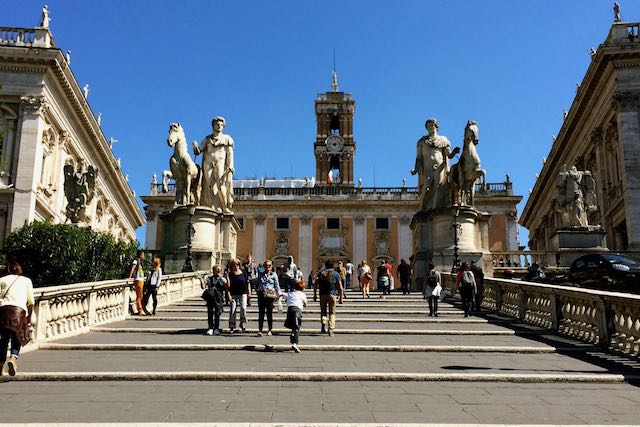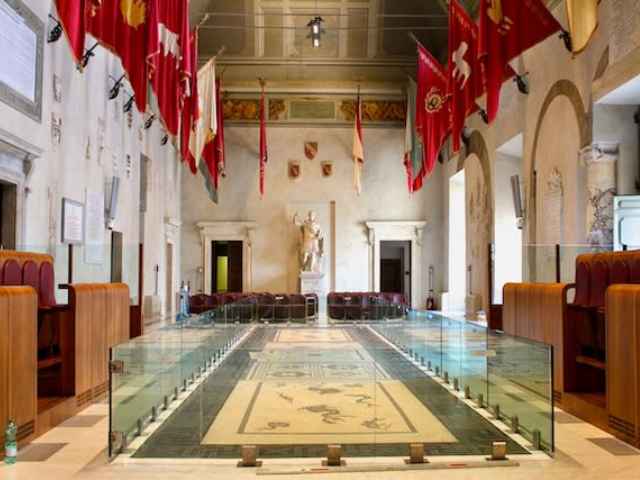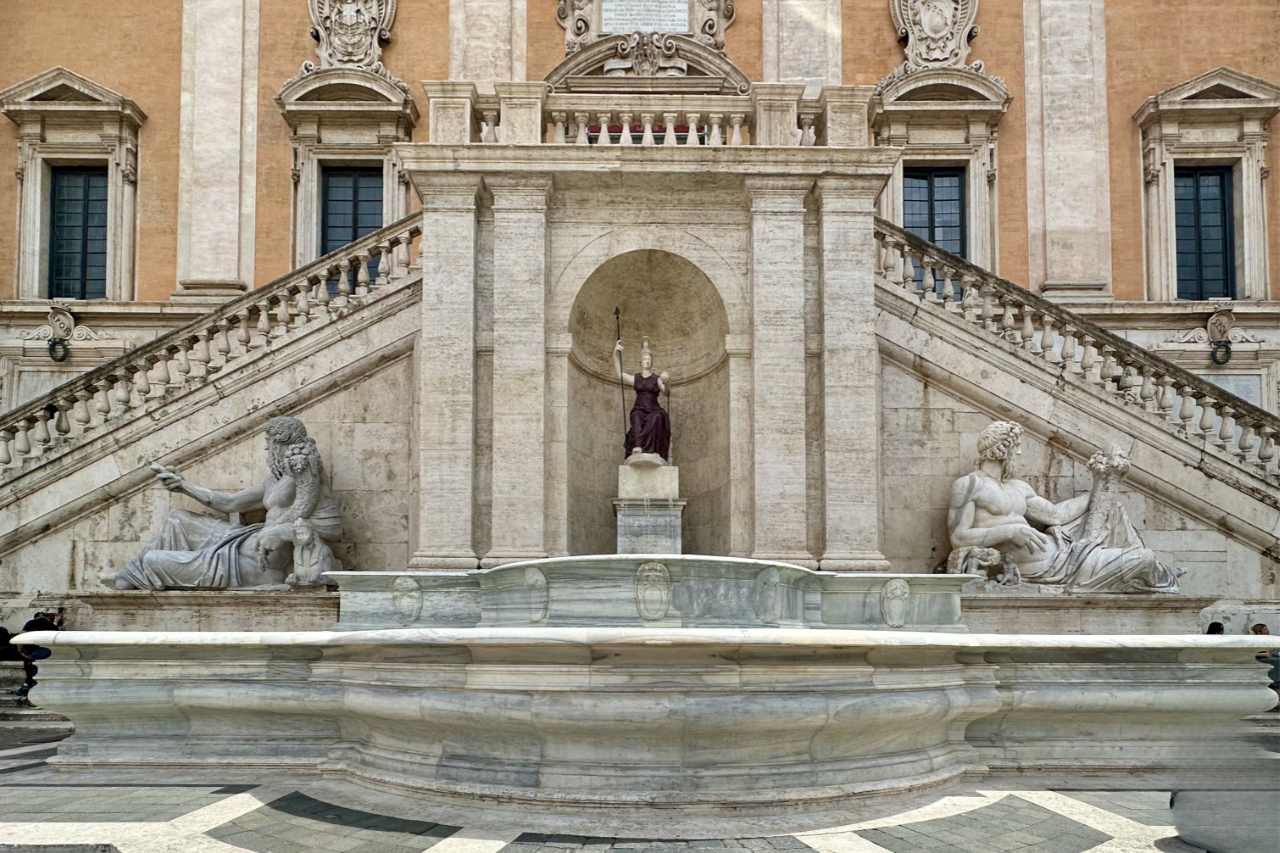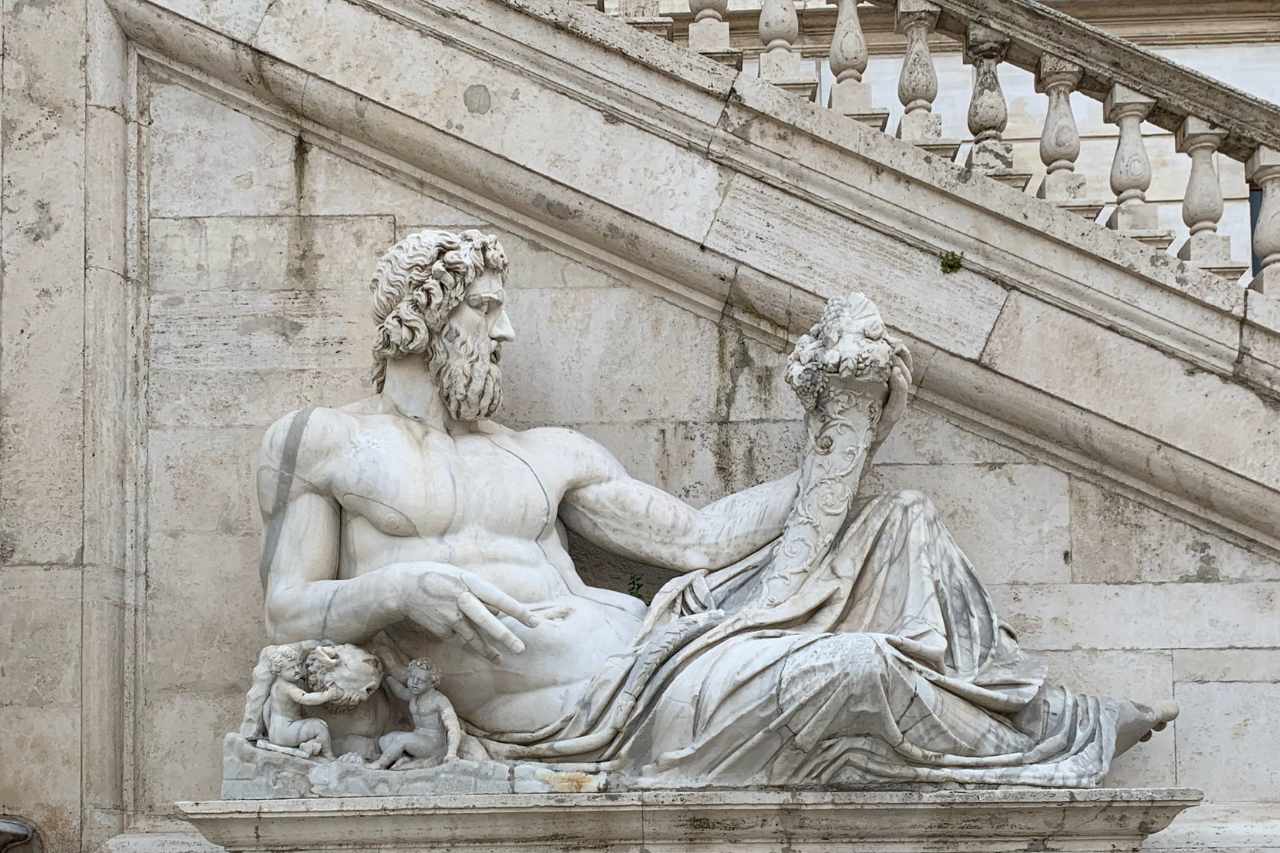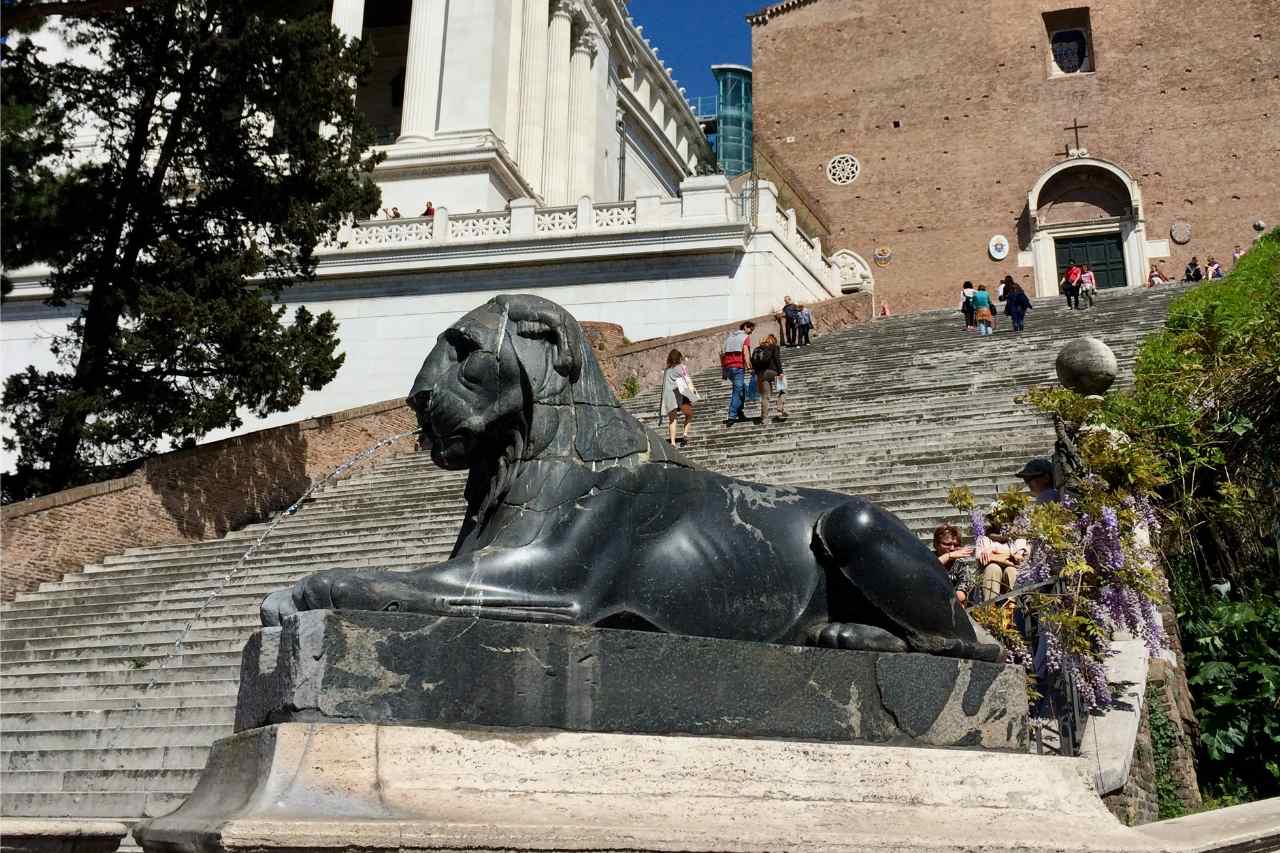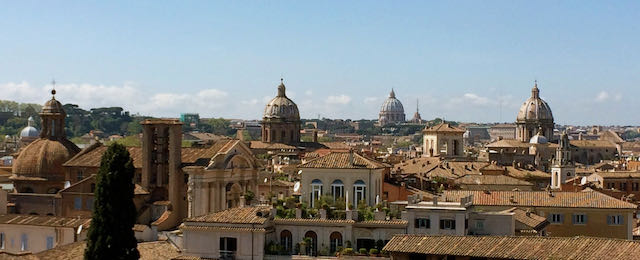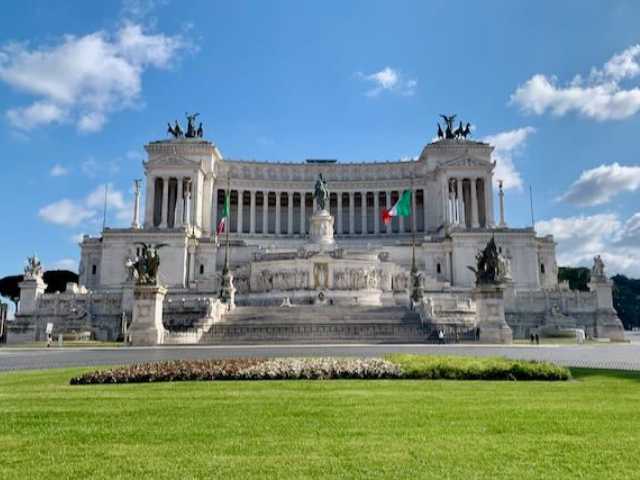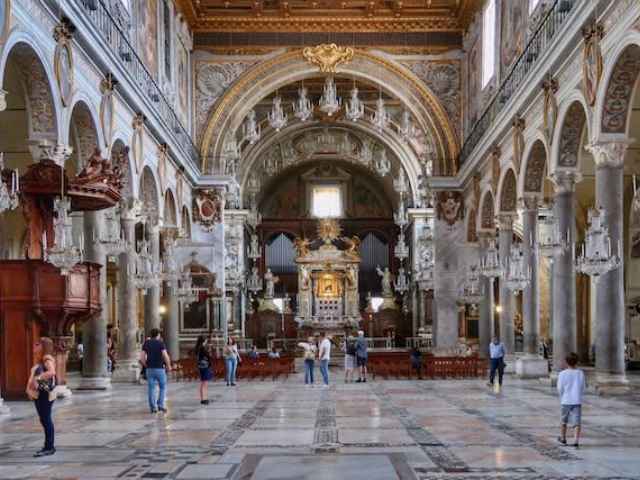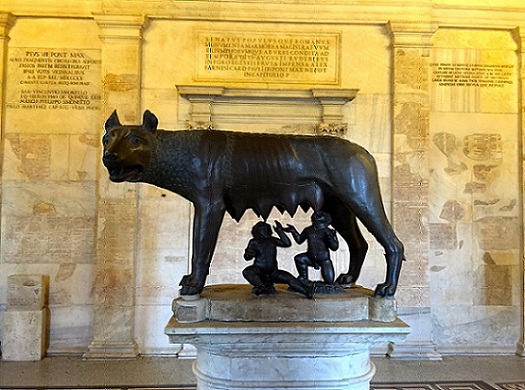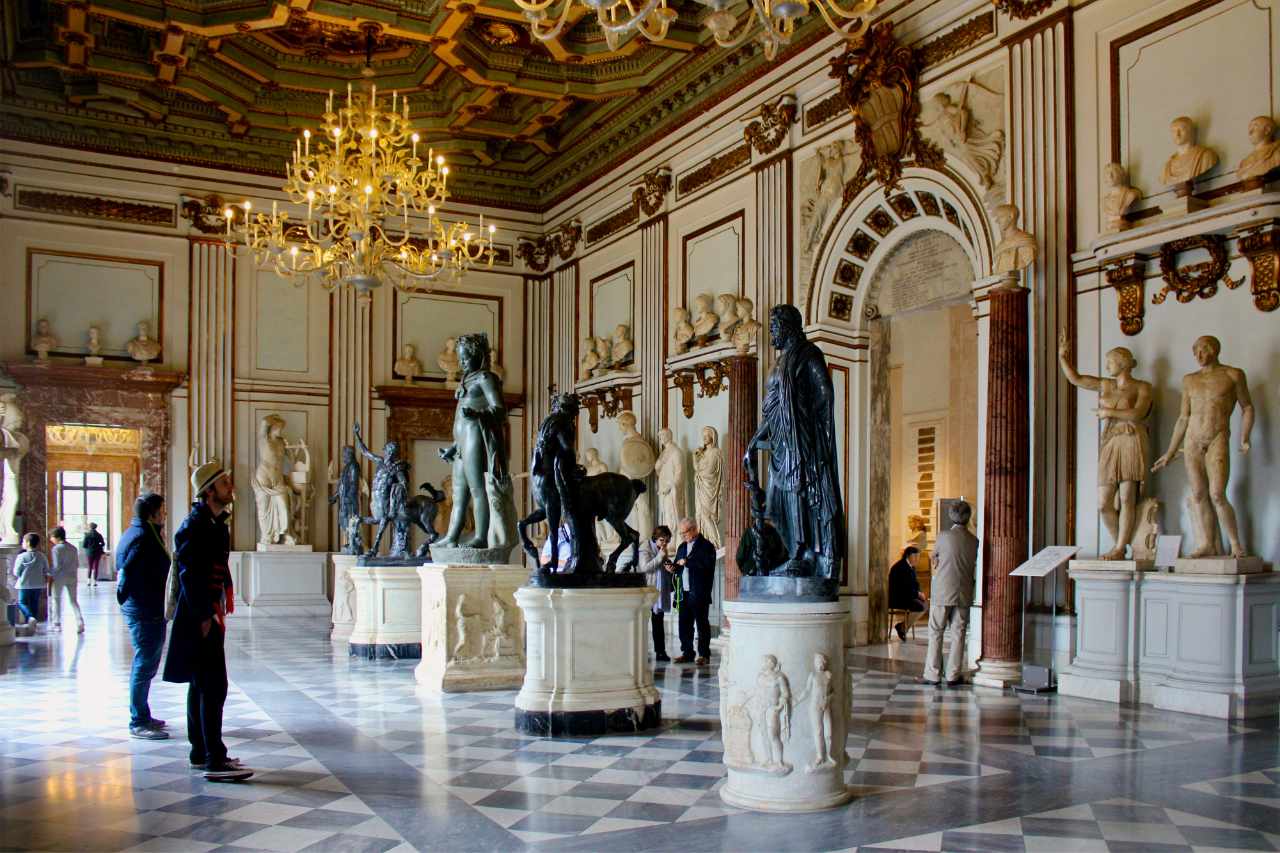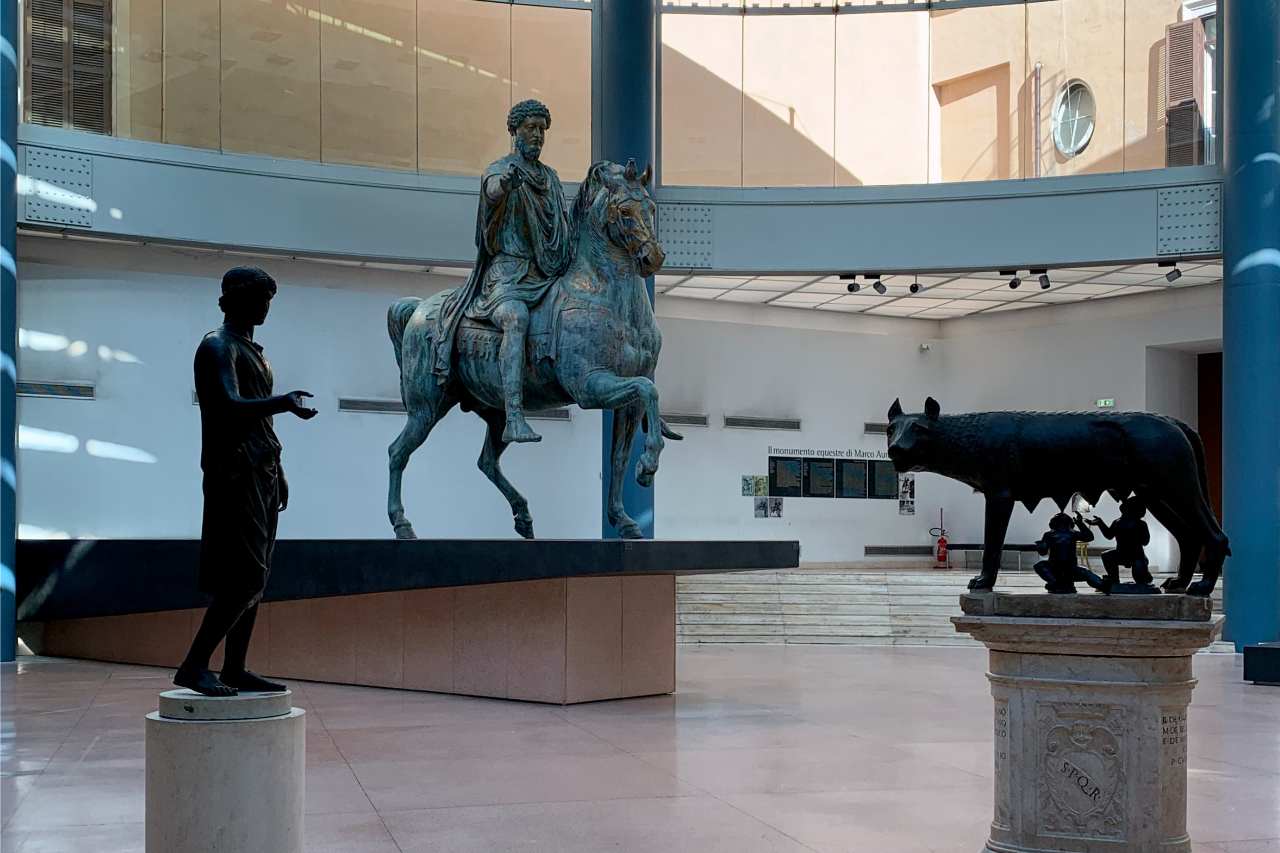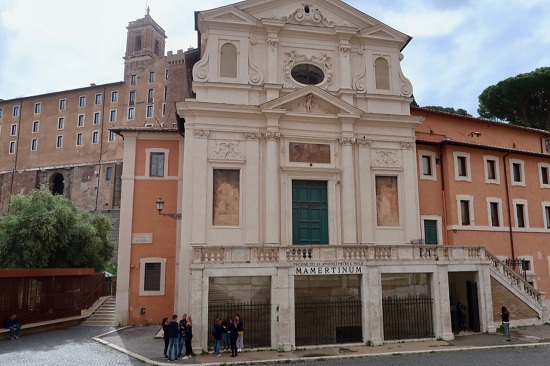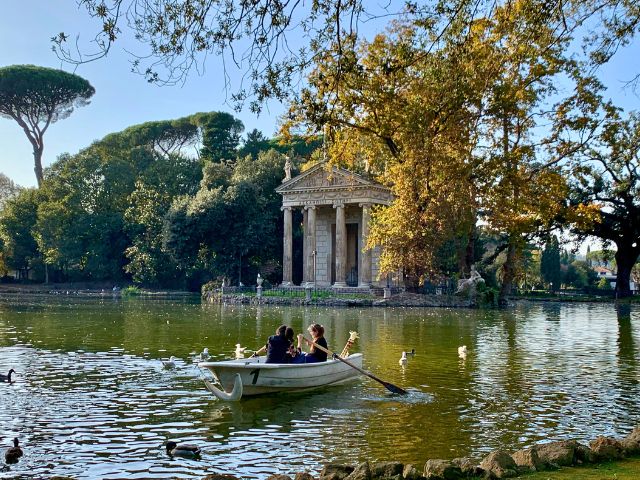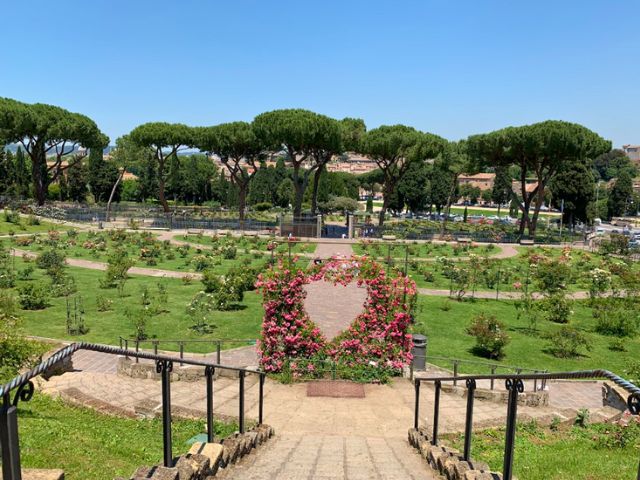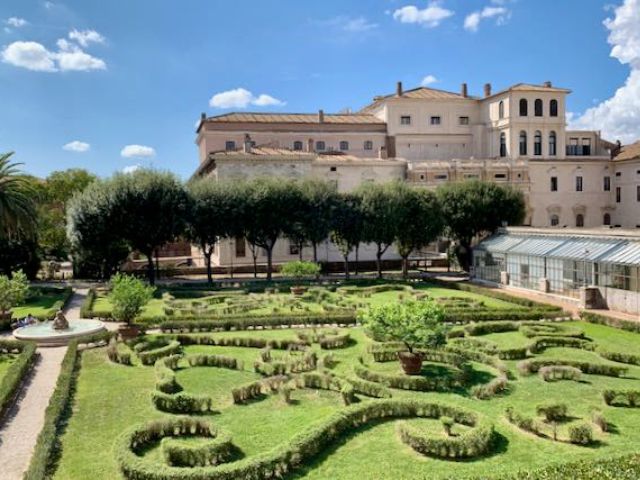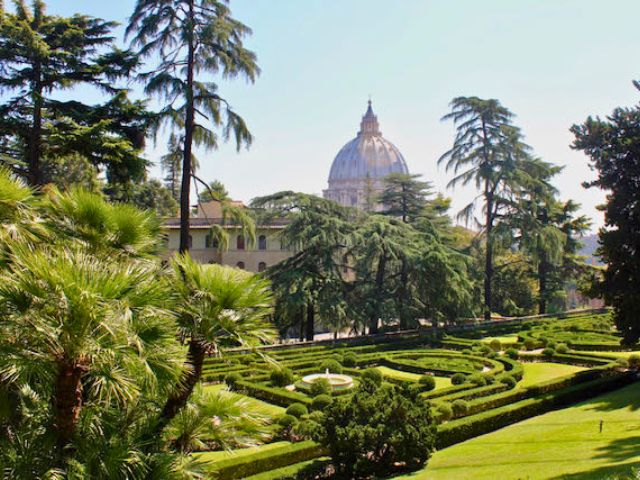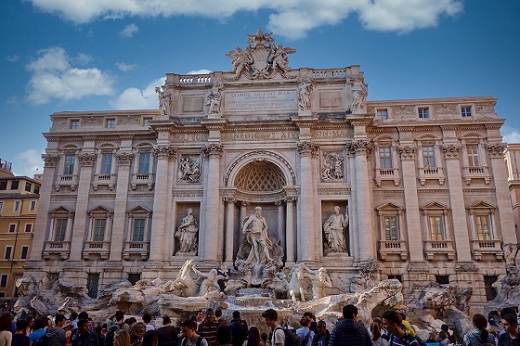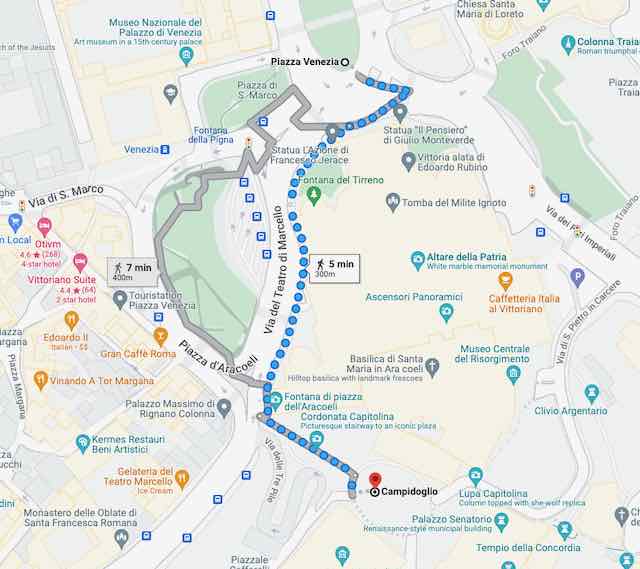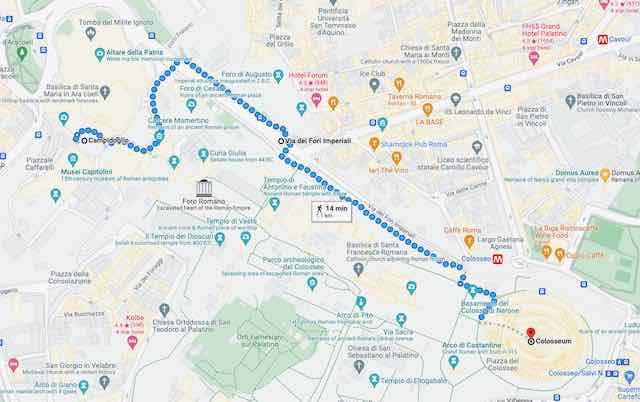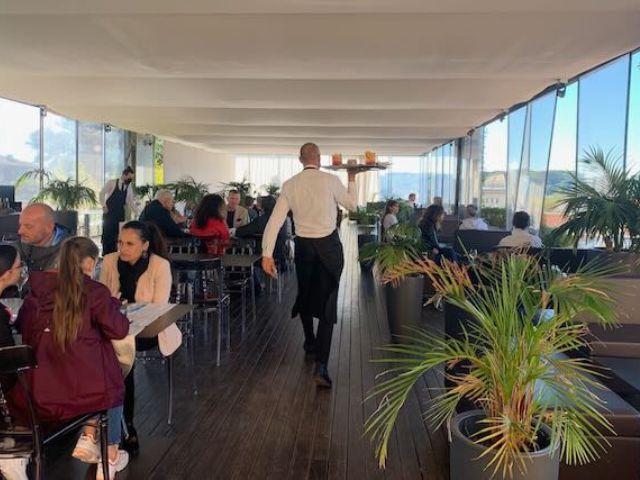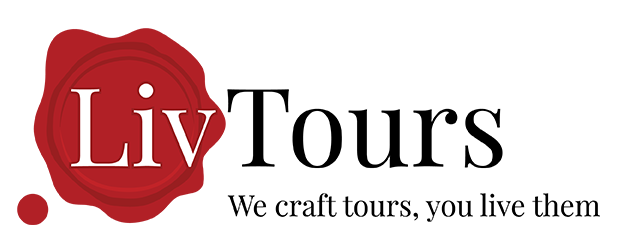- Sign up & get a FREE ebook Subscribe NOW!
- Romewise Home Page
- What to Do in Rome
- Capitoline Hill
Capitoline Hill - Don't Miss Out On This Special Place In Rome!
Capitoline Hill, or Piazza del Campidoglio in Italian, is one of my favorite places to visit in Rome.
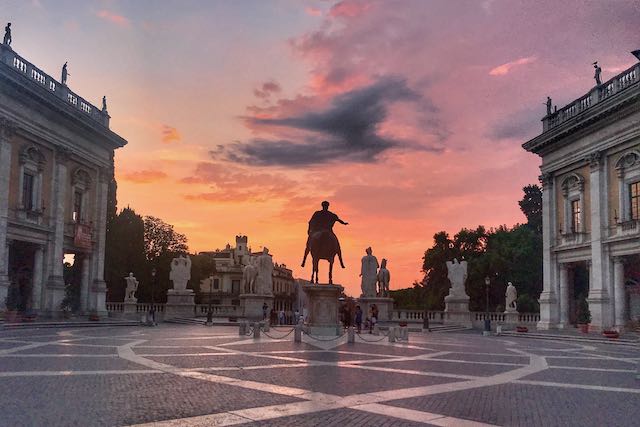 Capitoline Hill is a beautiful place to visit during your trip to Rome any time of the day or night!
Capitoline Hill is a beautiful place to visit during your trip to Rome any time of the day or night!Yet I find many visitors don't know much about it or why they should see it.
Capitoline Hill / Piazza del Campidoglio - Everything you need to know
Whether you want some of the best views in Rome, you want to visit one of the best museums in the Eternal City, or you're just looking to just understand 3000 years of Roman History, the Capitoline Hill is the place to be!
On this page we'll go over:
- What is the Capitoline Hill/Piazza del Campidoglio?
- Why was Capitoline Hill important in Ancient Rome? What was it used for?
- Did Michelangelo design Capitoline Hill?
- What are all the buildings on Capitoline Hill?
- What are all the statues on Capitoline Hill?
- What can you do on Capitoline Hill? Is it free?
- Are the Capitoline Museums worth paying for?
- What else is there to do in the area?
- How can you get to Capitoline Hill?
- Where are some good places to eat and drink nearby?
What is Capitoline Hill/Piazza del Campidoglio?
The sense of history on Capitoline Hill is palpable.
Despite being one of Rome's seven hills, and probably its smallest, this location packs a monumental punch, literally!
Located in Rione Campitelli and perfectly situated to view icons like the Colosseum and ancient ruins of the Roman Forum from above, it serves as an excellent tourist attraction.
It also holds unexpected surprises for visitors who decide to explore further!
Capitoline Hill was once just what it sounds like, the place that Ancient Romans identified as their Capitol.
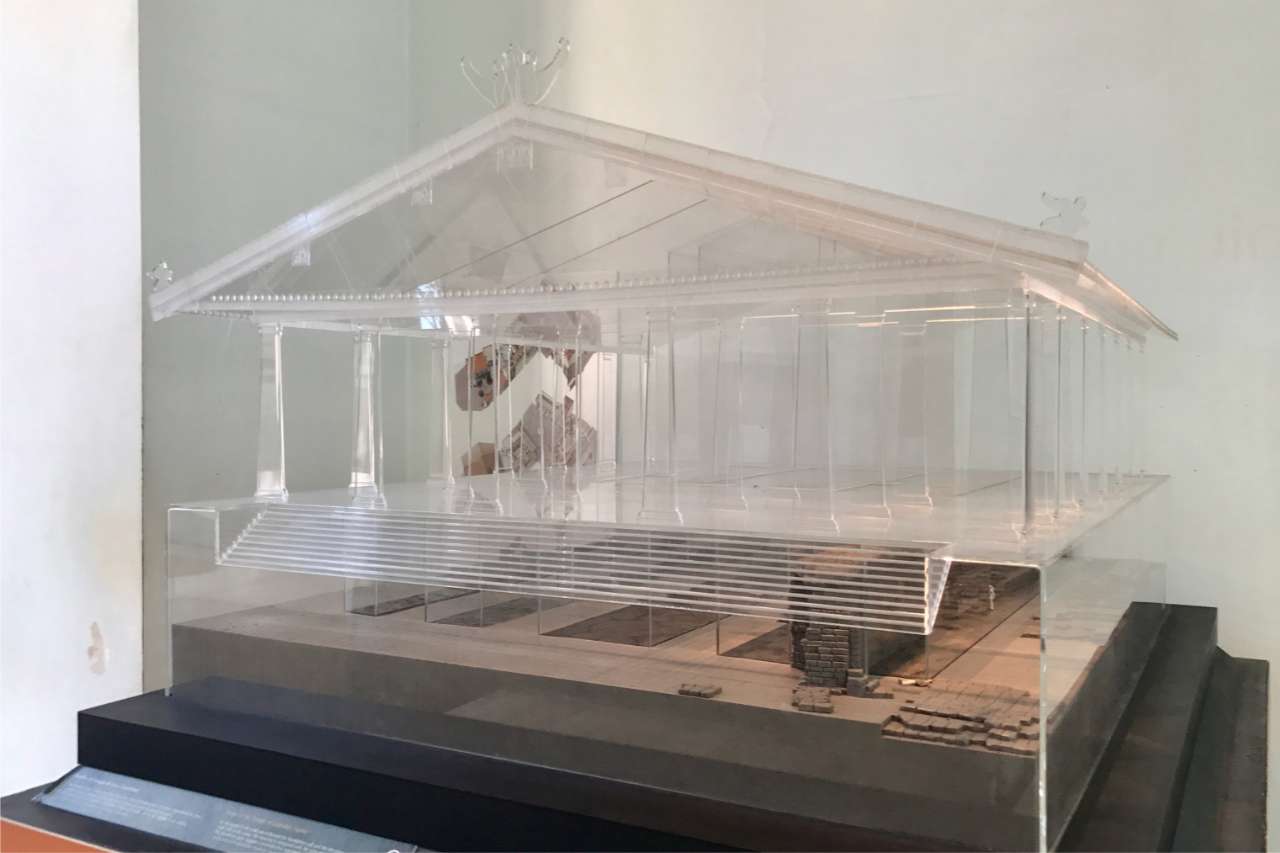 Inside the Capitoline Museums, you will find this model of what the Temple of Jupiter once looked like.
Inside the Capitoline Museums, you will find this model of what the Temple of Jupiter once looked like.In antiquity, there once stood the most important of all Roman temples, the temple to Jupiter Optimus Maximus (Jupiter - the best and greatest god), called Tempio di Giove in Italian.
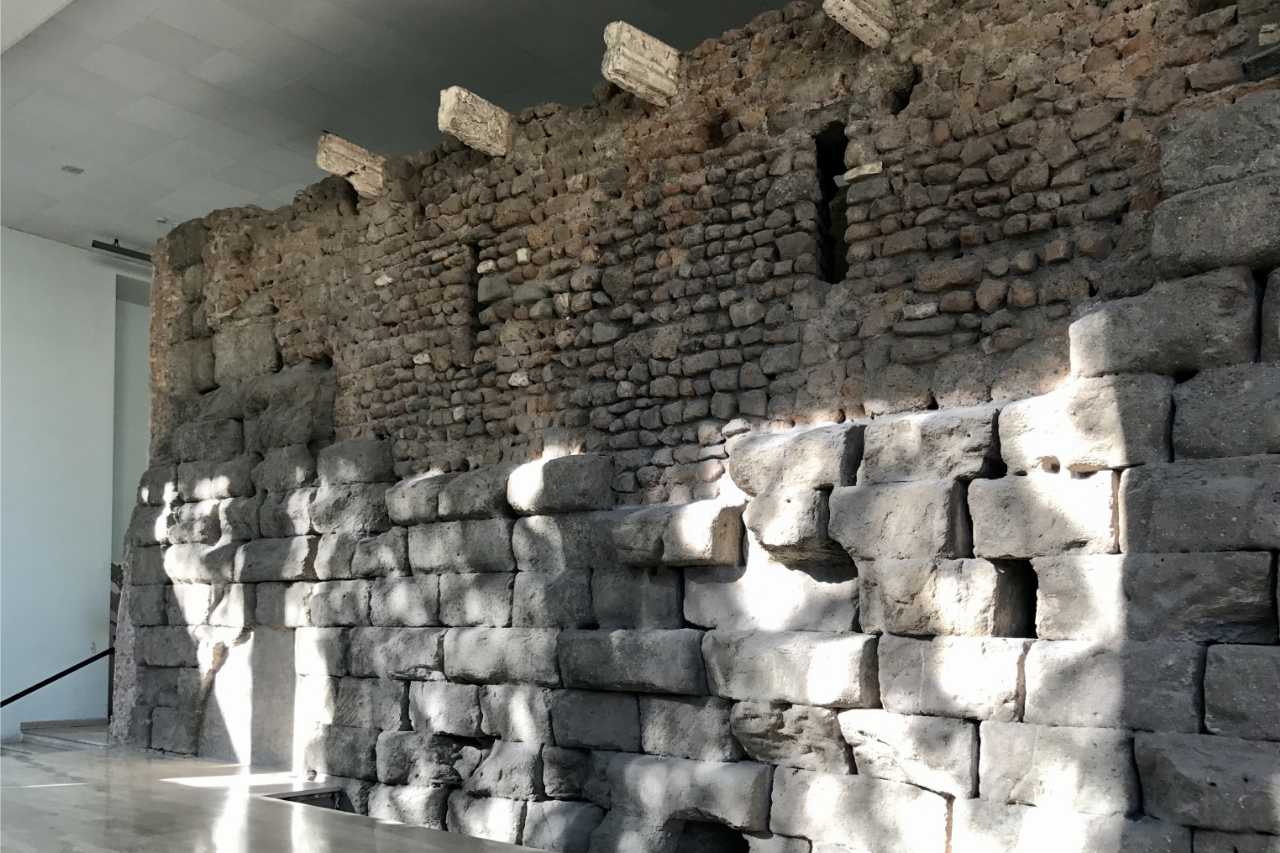 Also inside the Capitoline Museums, you can see and even touch the walls of the ancient Roman Temple of Jupiter!
Also inside the Capitoline Museums, you can see and even touch the walls of the ancient Roman Temple of Jupiter!Today you can still see parts of this temple - both inside and outside!
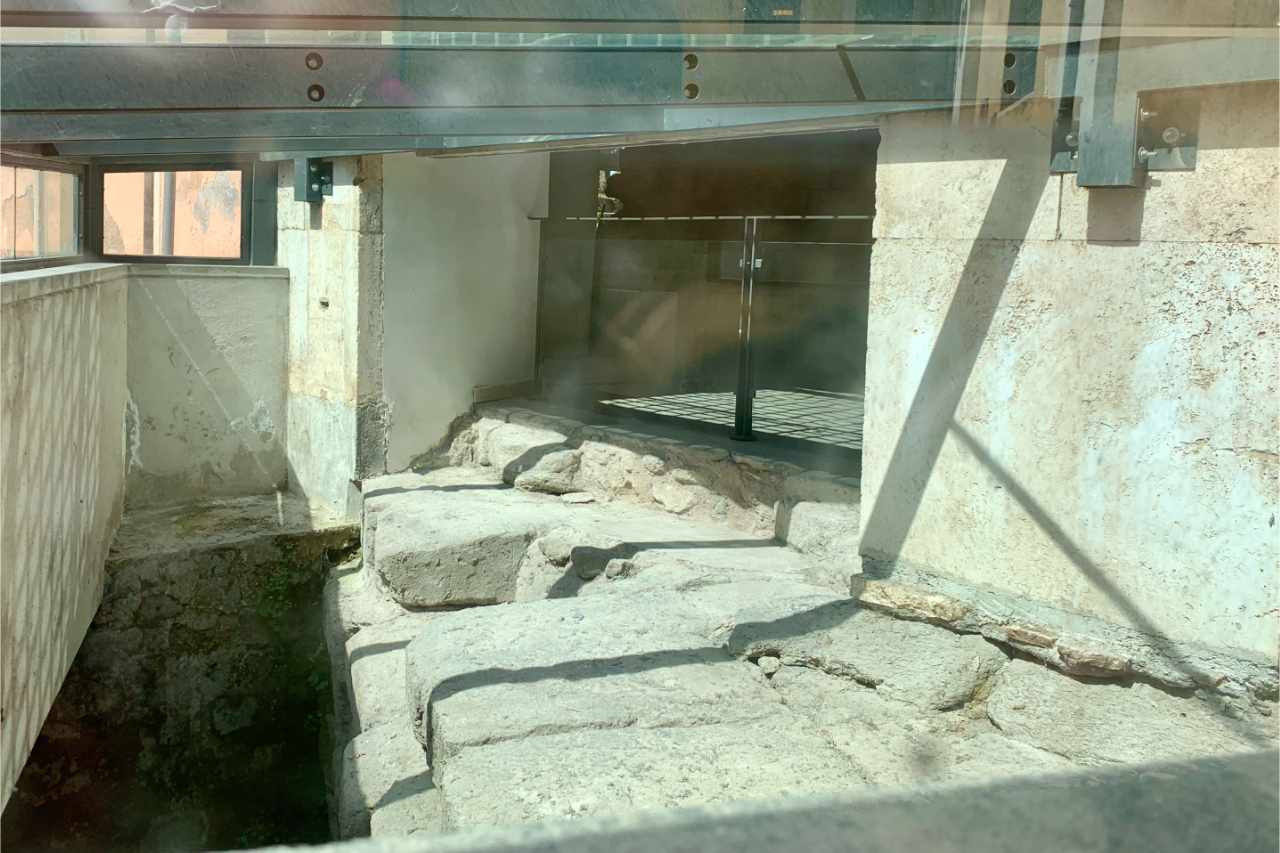 At the back of the Capitoline Museums, you can see parts of the Temple to Jupiter Maximus on the outside. They are covered by plexiglass so you might need to crouch down to get a better view.
At the back of the Capitoline Museums, you can see parts of the Temple to Jupiter Maximus on the outside. They are covered by plexiglass so you might need to crouch down to get a better view.Why was Capitoline Hill important in Ancient Rome? What was it used for?
Ceramics dating to the Bronze Age (around 1,300 BCE) have been found on Capitoline Hill, as well as evidence of extensive metalworking.
This shows that people lived on this spot long before the city of Rome was founded.
Capitoline Hill was originally two hills: the Arx and the Capitolium, separated by a small valley.
The first king of Rome, Romulus, used this valley to welcome people from nearby towns (hence the word 'asylum').
The strategic position of the hill with very steep sides made it a natural fortress for the city, protecting its inhabitants from attacks.
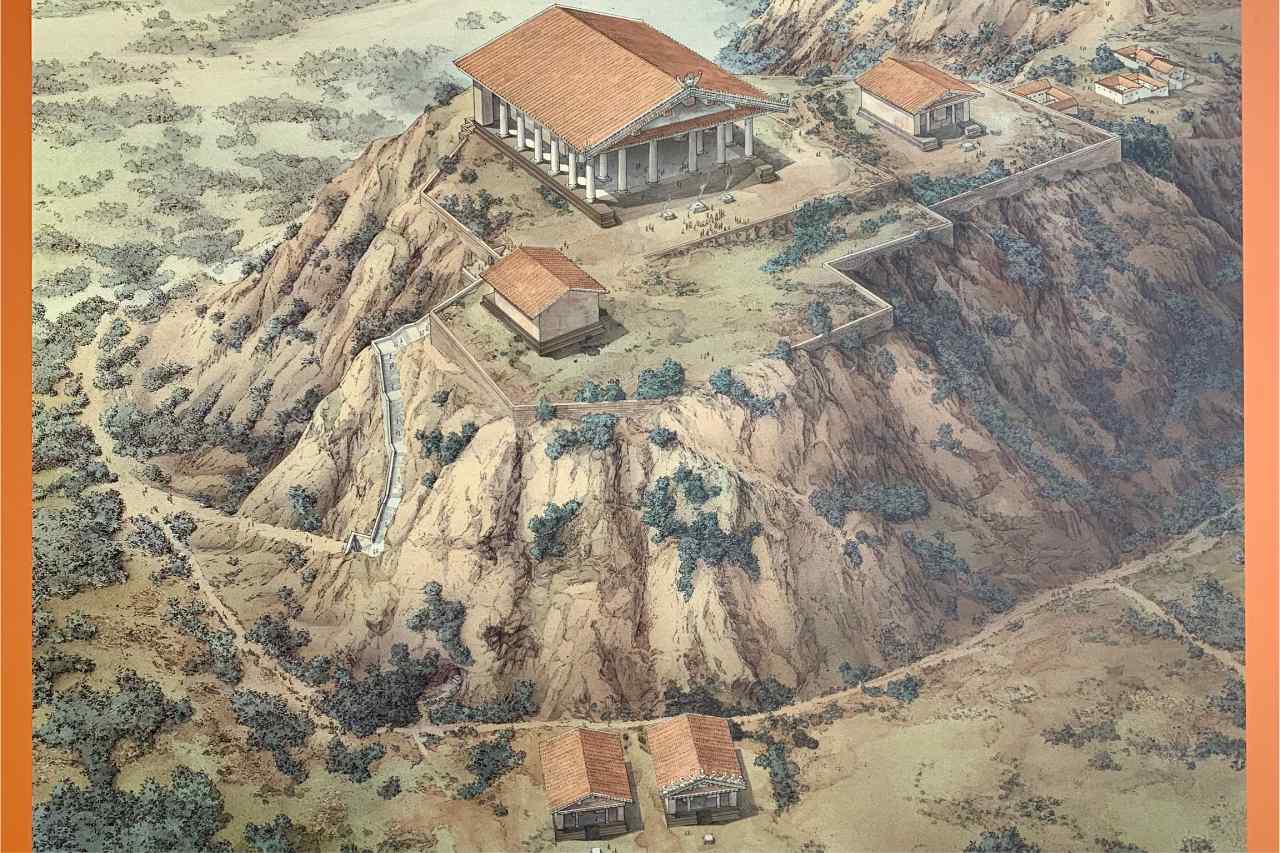 This rendering of Capitoline Hill from the Archaic Age (second half of the 6th century BCE) shows what the temple of Jupiter Optimus Maximus might have looked like in context. The illustration can be found inside the Capitoline Museums.
This rendering of Capitoline Hill from the Archaic Age (second half of the 6th century BCE) shows what the temple of Jupiter Optimus Maximus might have looked like in context. The illustration can be found inside the Capitoline Museums.For ancient Romans, Capitoline Hill was the center of religion and politics of a burgeoning society.
The most important temples in the city included the Temple of Jupiter Optimus Maximus, the Temple of Juno Moneta (the word 'money' derives from the temple’s name - it was once the mint!), and the Temple of Minerva.
Disclosure: If you make a purchase through a link on this page, I may receive a small commission - at no extra cost to you. Thank you for supporting my site!
Did Michelangelo design Capitoline Hill?
Yes, Michelangelo Buonarroti designed the version of Capitoline Hill you see today.
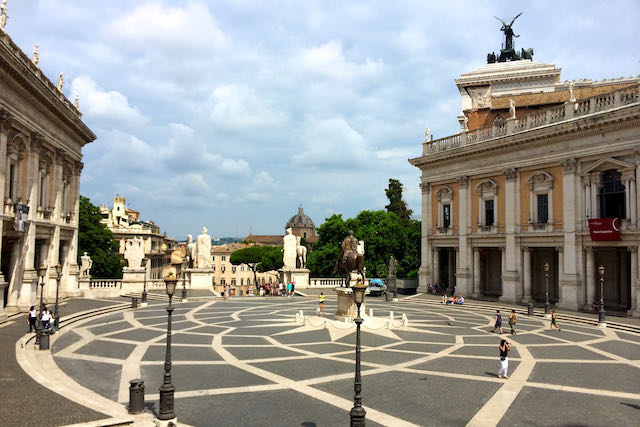 The stunning geometric patterns you see today were installed according to Michelangelo's designs, although this paving was not added until 1940!
The stunning geometric patterns you see today were installed according to Michelangelo's designs, although this paving was not added until 1940!Moving from the past to the future
Between the fall of the Western Roman Empire in the 5th century and the Middle Ages, Capitoline Hill had become an unruly jumble of buildings sitting at varied angles and on different elevations, each surrounded by dirt and weeds.
In 1536, the Holy Roman Emperor Charles V was planning a visit to the Eternal City.
Pope Paul III (Farnese) was mortified by the dilapidated state of the Capitoline Hill.
He called upon 61-year-old Michelangelo, who was at the height of his fame, to tackle the project.
One very important change Michelangelo made right off the bat was to change the orientation of the square from overlooking the Roman Forum (the past) to facing Saint Peter's Basilica and central Rome (the present and future.)
Creating harmony
At the time, there were a couple of buildings more or less in the center of the hill: Palazzo Senatorio (Palace of the Senate) and Palazzo dei Conservatori.
They stood at angles to one another.
Michelangelo wanted the Piazza del Campidoglio to have symmetry so he proposed a third building that would somewhat mirror the Palazzo dei Conservatori: the Palazzo Nuovo (New Palace.)
He redesigned the façades of the Palazzo dei Conservatori and of the Palazzo del Senatorio to match the new facade he'd designed for the Palazzo Nuovo, so they would be in harmony with the rest of the square.
Michelangelo's design included the ramp that leads to the Piazza del Campidoglio, called the Rampa della Cordonata.
Although Michelangelo designed this ramp, it was actually completed by Giacomo della Porta after Michelangelo's death.
And that gorgeous floor pattern you see beneath your feet?
That was also Michelangelo's design, although it was not actually implemented on the hill until Mussolini commissioned it in 1940.
The word "square" is a bit misleading since the shape is something of a trapezoid, but this was the only way the symmetry could work, given the uneven ground and the pre-existing buildings there.
What are all the buildings on Capitoline Hill?
When you reach the top of the hill and take in the views of Rome around you, you may be wondering what the different buildings around you are for.
The Palazzo of the Senators/Palazzo del Senatorio
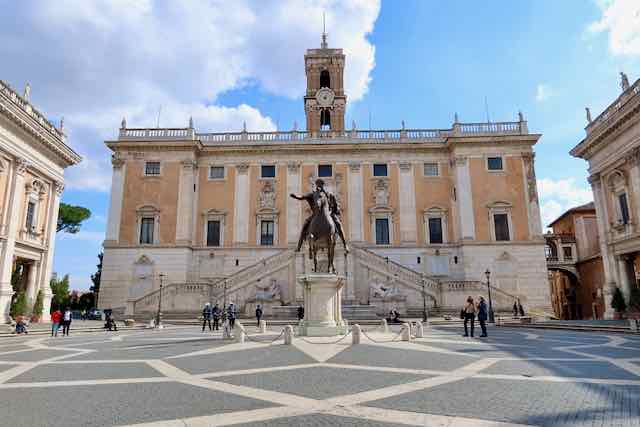 When you stand on Capitoline Hill, you will be surrounded by 3 buildings. The one straight in front of you is Palazzo del Senatorio and it's where City Hall is.
When you stand on Capitoline Hill, you will be surrounded by 3 buildings. The one straight in front of you is Palazzo del Senatorio and it's where City Hall is.The building you see in the middle of the square is the Palazzo del Senatorio (Senate Palace) which today houses Rome's city municipality, i.e. the Mayor's office.
It was built in the 13th century on top of the Tabularium, a state records office constructed in 78 BCE that once housed archives during the Roman Empire.
The Tabularium
The Tabularium has been in use since 1144, making it the oldest city council in the world!
While you cannot visit the Mayor's office or other parts of the Palazzo del Senatorio, you can visit the Tabularium as part of the Capitoline Museums.
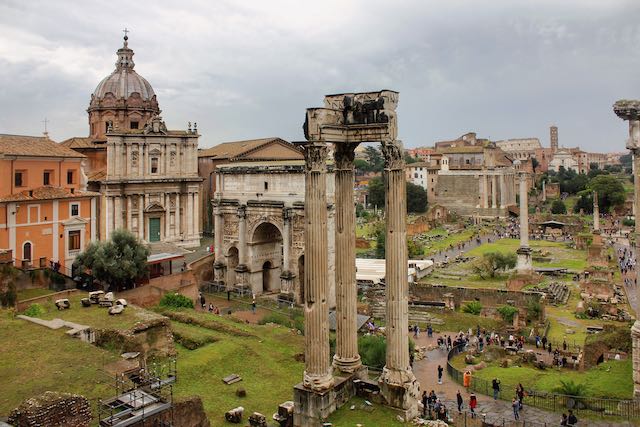 It seems every time I visit the tabularium, it's raining in Rome. In any case, it still makes for one of my favorite views over the Roman Forum!
It seems every time I visit the tabularium, it's raining in Rome. In any case, it still makes for one of my favorite views over the Roman Forum!It is the underground connection between the two museum buildings on either side of the Piazza del Campidoglio.
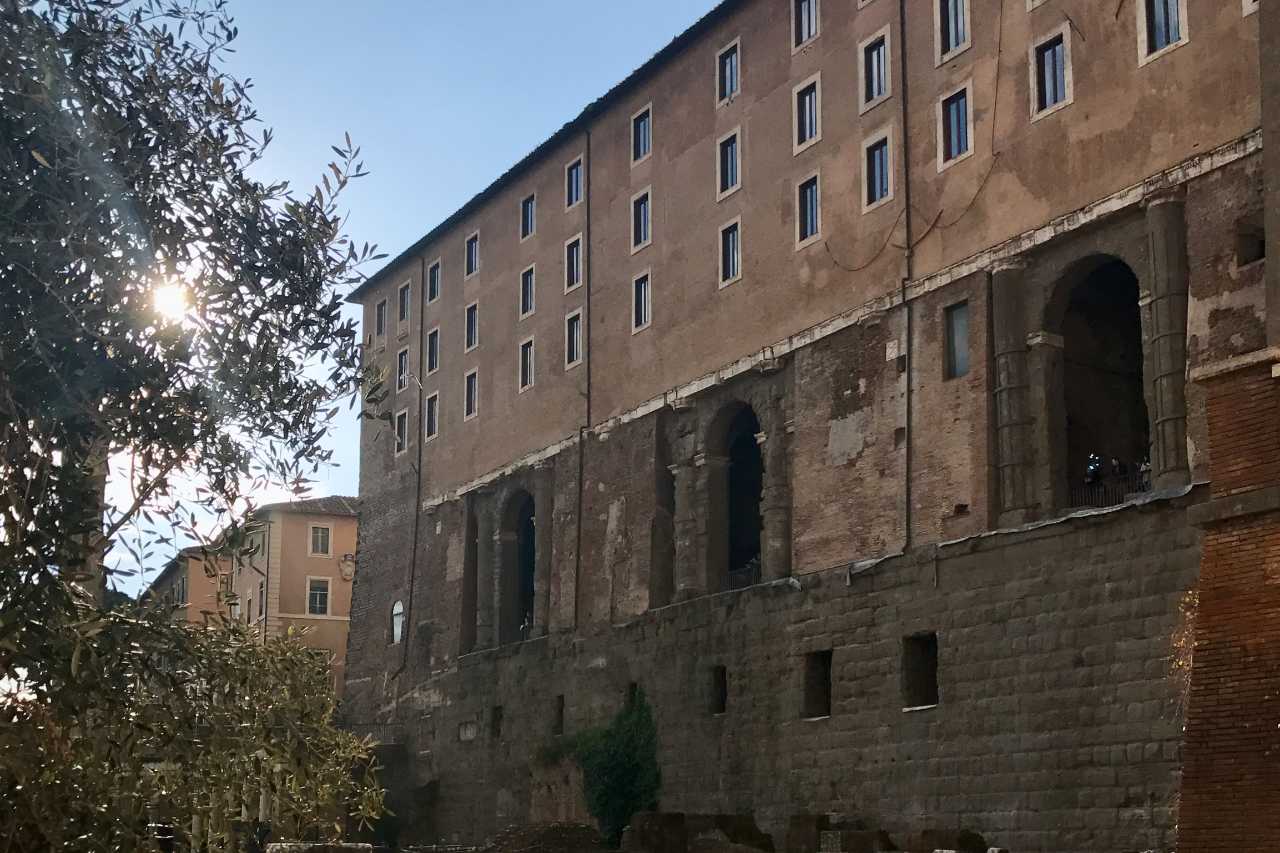 You can see the Tabularium underneath the Palazzo del Senatorio from either side of Capitoline Hill where it overlooks the Roman Forum.
You can see the Tabularium underneath the Palazzo del Senatorio from either side of Capitoline Hill where it overlooks the Roman Forum.If you don't visit the museums, you can still see the Tabularium as it sits underneath the Palazzo del Senatorio by heading to the back terrace of Piazza del Campidoglio (either side) and looking back.
the main staircase
On the ground floor at the front of the Palazzo del Senatorio, there is a double flight of stairs designed by Michelangelo.
On either side of this staircase heading up to the second floor, two 1st-century river-god sculptures represent the Nile (left) and the Tiber (right).
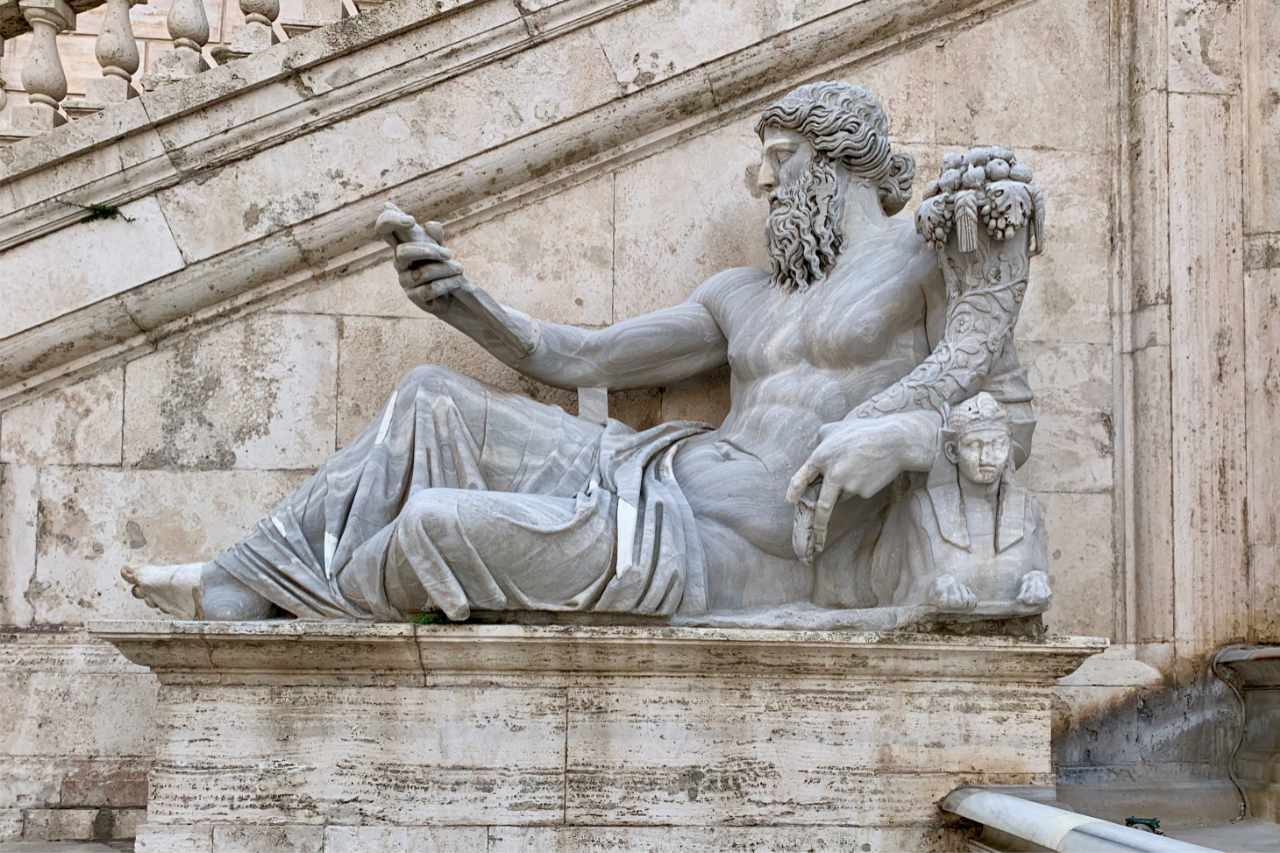 You can tell this is depicting the Nile River because of Egyptian symbols like the sphynx. (My sister said he looks like he is using his iPhone and now I can't un-see it!)
You can tell this is depicting the Nile River because of Egyptian symbols like the sphynx. (My sister said he looks like he is using his iPhone and now I can't un-see it!)River god statues in antiquity always showed a reclining bearded man holding a cornucopia (water brings life), along with other symbols that depicted the specific river.
In this case, the Roman river god, representing the Tiber, shows a she-wolf suckling the twins Romulus and Remus, and the Nile river god shows a sphynx.
In the center of the staircase, the goddess of Rome, represented by Minerva, is made of the highly prestigious porphyry marble.
This stone was quarried from Ancient Egypt and was reserved for use in Rome only for the most important and prominent pieces.
Palazzo dei Conservatori and Palazzo Nuovo
These two palaces face each other, even if at an angle.
Although they look similar, the Palazzo dei Conservatori was built in 1400 while Palazzo Nuovo was designed in the 1500s by Michelangelo specifically to mirror Palazzo dei Conservatori and create symmetry.
Palazzo dei Conservatori and Palazzo del Senatorio were then both renovated by Michelangelo and Giacomo della Porta to match the design Michelangelo had created for the Palazzo Nuovo.
In 1471, the della Rovere Pope, the same pope who has the Sistine Chapel named for him, had started collecting various classical sculptures and other pieces of art, housing it inside the Palazzo dei Conservatori.
Once the Palazzo Nuovo was completed in the 17th century, it was used to house more of the collection.
In 1734 these buildings were opened to the public as the Capitoline Museums.
The perfect 3-day itinerary in Rome
Trying to figure out how to organize your visit to Rome? I've got the perfect 3-day itinerary for first-time visitors (or those who have not been here in a while.) It works for a 2.5 day visit as well.
In my 3-day itinerary, you'll see all the major must-see Rome attractions like the Vatican, Colosseum, Trevi Fountain, Pantheon, Piazza Navona, Spanish Steps, and much more.
And if you have more time, or want suggestions for extra/other things to do, you'll find that there too.
Visit my page with the best 3-day itinerary in Rome for first-timers.
What are all the statues on Capitoline Hill?
While there are a lot of buildings to take note of on Capitoline Hill, it is also full of statues.
Here's a brief description of the most important statues you will see.
Bronze Equestrian statue of Marcus Aurelius
The central statue of Piazza del Campidoglio is a replica of an equestrian statue of Roman Emperor Marcus Aurelius who reigned from 161-180 CE.
This is the only Roman equestrian statue that has survived from antiquity.
Most ancient Roman bronze statues were destroyed in the Middle Ages, as they were considered pagan, and the bronze was needed for other uses.
This statue was mistaken for Constantine the Great, the first Christian emperor, and so it was saved, luckily for us!
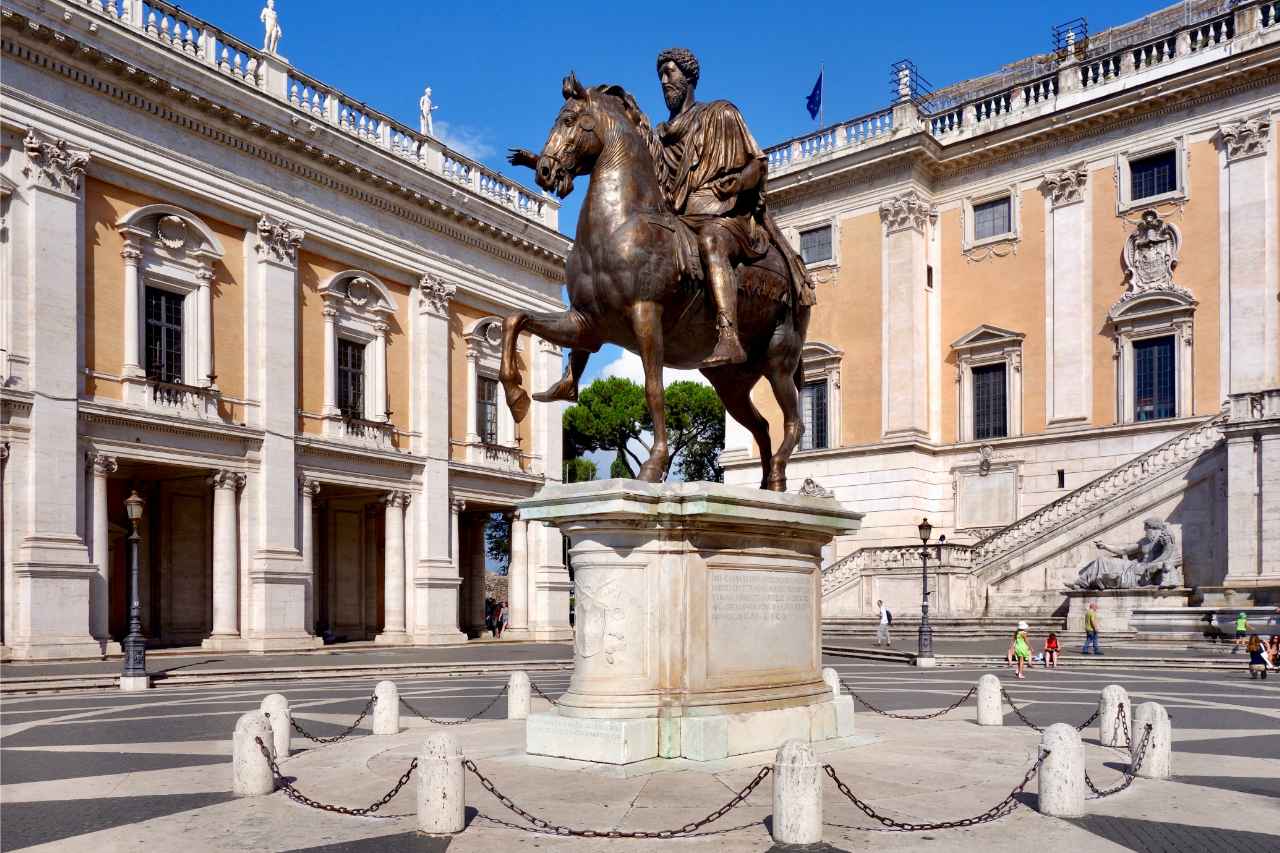 The bronze equestrian statue of Marcus Aurelius looms large over the many visitors to the Capitoline hill.
The bronze equestrian statue of Marcus Aurelius looms large over the many visitors to the Capitoline hill.The impressive statue in the center of the Piazza del Campidoglio is a copy made with laser technology in 1981.
The original equestrian statue was moved inside the Capitoline Museums at the same time to protect and preserve it.
The ancient statue was originally located either in the Roman Forum or in Piazza Colonna, but it was Michelangelo who had it moved here in 1538 as part of his restoration project, designing the pedestal of the statue at the same time.
The Lupa, or she-wolf
Just a bit behind and to the left of the statue of Marcus Aurelius, you can spot the symbol of Rome, the she-wolf, or lupa.
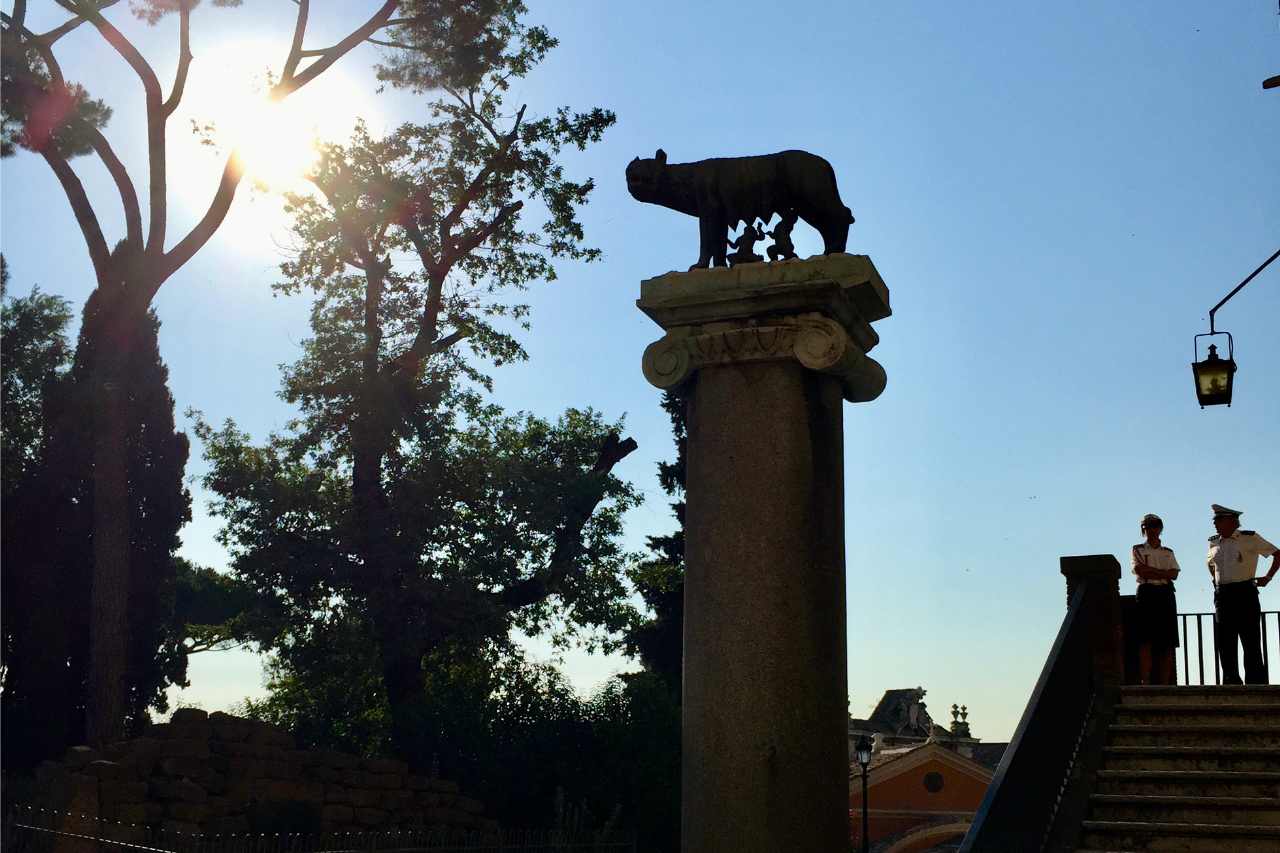 I love seeing the bronze Campidoglio lupa against the deep blue sky, like on this early summer morning.
I love seeing the bronze Campidoglio lupa against the deep blue sky, like on this early summer morning.Like the equestrian bronze statue of Marcus Aurelius, this bronze she-wolf is also not the original.
You can find the original inside the Capitoline Museums in the same room with the original Marcus Aurelius statue.
The Dioscuri
At the top of the ramp are the statues of the Dioscuri (Castor and Pollux).
Castor is on the left and Pollux on the right.
They are mythological figures and there are a lot of conflicting versions of their origins.
For example, Castor and Pollux are either both gods or Pollux is a god and Castor is mortal.
Their mother was Leda, who is famous for being raped by Zeus while he is in the form of a swan.
Sometimes Zeus is the father only of Pollux, which is why he is the divine one.
And in that version, Castor is the mortal son of Tyndareus, the king of Sparta.
Most stories have them hatched from an egg (since Zeus was a swan when they were conceived), along with their twin sisters, Helen of Troy and Clytemnestra.
They are always seen together and always with horses, and they are harbingers of war, but they are also seen as protectors of the city of Rome.
In the Roman Forum, you will see a huge ruin with three columns.
This is the remainder of the temple of Castor and Pollux.
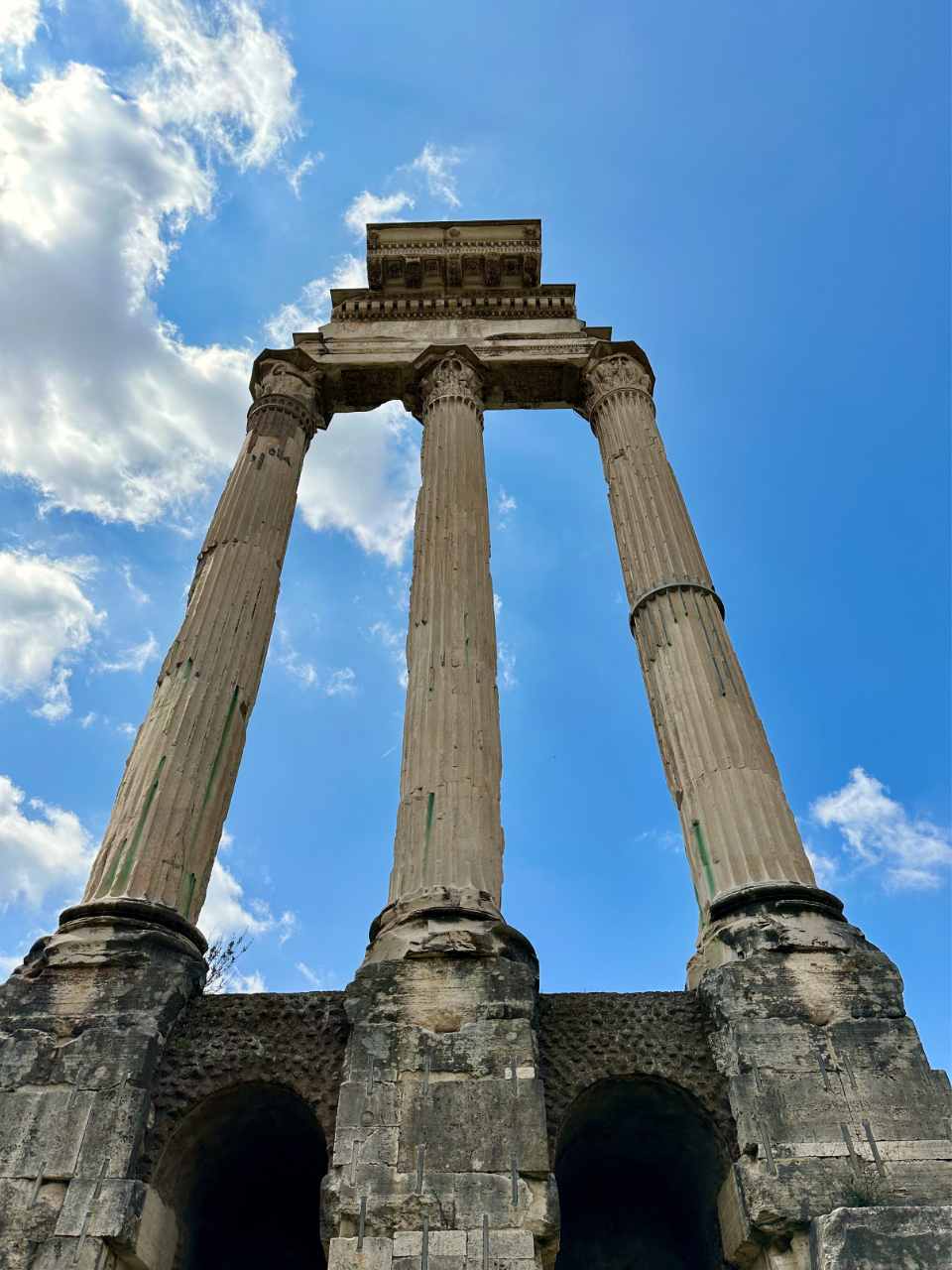 In the Roman Forum, this very noticeable ruin made of three tall columns is all that remains of the temple of Castor and Pollux.
In the Roman Forum, this very noticeable ruin made of three tall columns is all that remains of the temple of Castor and Pollux.Egyptian Lions
At the bottom of the ramp you'll find two Egyptian basalt lion fountains.
They were relocated here from the ancient temple dedicated to Serapis and Isis near the basilica of Santa Maria Sopra Minerva in Rome.
Cola di Rienzi
As you go up the ramp, there is a statue of Cola di Rienzi about halfway up on the left.
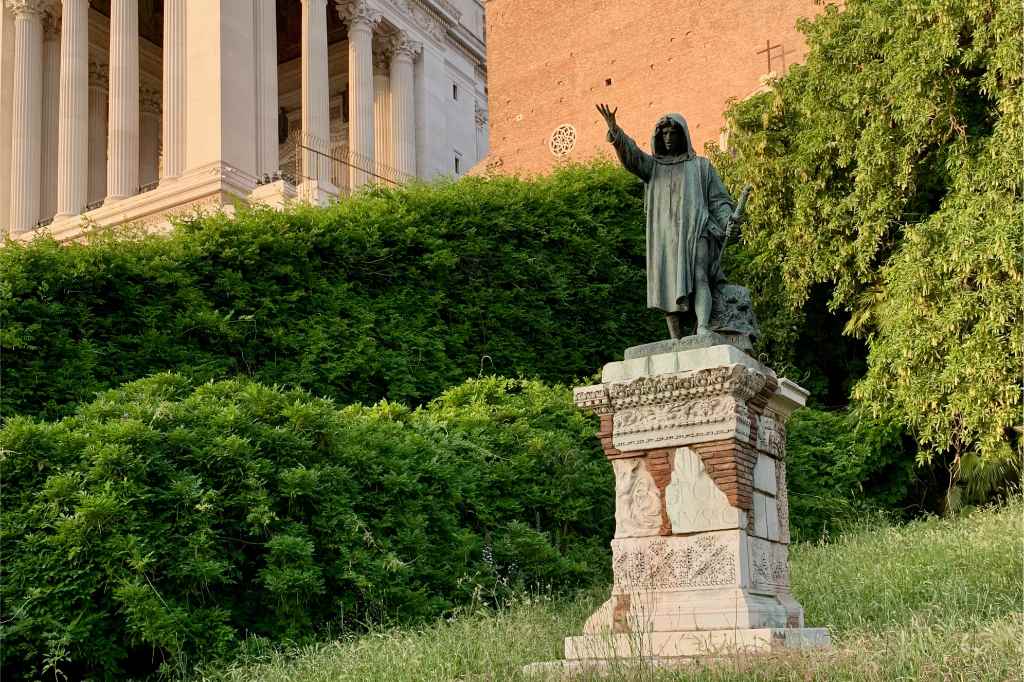 It's easy to miss this fairly small statue of Cola di Rienzo, but he was an important political figure in Italy's history.
It's easy to miss this fairly small statue of Cola di Rienzo, but he was an important political figure in Italy's history.He was an important political figure in Rome in the 14th century, advocating for the abolition of papal power and the unification of Italy.
He proclaimed himself the "Tribune of the Roman people."
Over the years he held power, fell out of power, and gained it again.
In 1354, at the age of 41, he had fallen far out of favor and was murdered by an angry mob right on this spot, which is why the statue is in such a strange location.
What can you do on Capitoline Hill? Is it free?
It's free to visit Capitoline Hill and Piazza del Campidoglio, but the Capitoline Museums have an admission fee.
A visit to this area is well worth it as there is a lot to see and do, whether you only see the free stuff or also visit the museums (and other sites and monuments here.)
Free things to do include:
- Admiring the architecture of the square itself, designed by Michelangelo
- Checking out the equestrian statue and monument of Marcus Aurelius (even if it is a copy)
- Spying the bronze she-wolf statue demonstrating the lore of Rome's founding
- Taking in the stunning views of the Roman Forum and Palatine Hill to the back, or sweeping city views from the Caffarelli Terrace (see below.)
Caffarelli Terrace
Visiting the Caffarelli Terrace is also free and you can enjoy more views over Rome and towards the Vatican from there.
Nearby things to do for free
The two buildings next to Capitoline Hill, the Altar to the Fatherland and the basilica Ara Coeli are also free to visit.
Altar to the Fatherland
The Altar of the Fatherland, also known as the Vittoriano or Wedding Cake building, has some sections that require a fee to enter but most of the monument can be visited without a charge.
Basilica Ara Coeli
The basilica of Ara Coeli is an ancient church, founded in the 6th century over a previous abbey and later remodelled in subsequent centuries.
It's located on the site of the ancient Roman temple of Juno Moneta and houses the relics of Empress Helena, mother of Roman Emperor Constantine who founded the basilica of St John Lateran.
The church is open daily 9 AM - 6 PM but you may not be able to visit during mass.
Ready to plan your trip?
Book your train
Planning to travel between cities in Italy and other parts of Europe?
Use Trainline to see all the different options available across the different rail companies.
Find your hotel
Find your perfect place to stay in Rome.
Use Booking.com to choose between hotels, guesthouses, and self-catering apartments in neighborhoods throughout the Eternal City.
Buy your TurboPass
Purchase the convenient Turbopass and visit all of Rome's top attractions including the Colosseum, Pantheon, and Vatican.
With one handy pass, it's all included.
Are the Capitoline Museums worth paying for?
If it's your first visit to Rome and you don't have much time, you would likely easily overlook the Capitoline Museums.
There are so many big-hitter attractions in Rome like the Colosseum, Saint Peter's Basilica and the Sistine Chapel, that something inevitably has to be missed.
I personally am a huge fan of these museums and think they are way under-visited, especially when you consider:
- The Capitoline Museums are the oldest in the world
- There are masterpieces from antiquity that are worth the admission price alone
- There is a lesser-known pinacoteca (paintings gallery) that has stunning works by Caravaggio, Guido Reni, Rubens, Domenichino, and many more.
So if you can't fit them in on your first visit, if it's your second (or third or fourth!) visit to Rome, or if you are a particular fan of classical art works, then they are absolutely worth visiting!
If you want to have a comprehensive understanding of the history of Rome (and have high energy levels!), I highly recommend combining a half day guided tour of the Colosseum and the Roman Forum with a half day tour of the Capitoline collection.
For more Capitoline Hill & Museums tours, click here!
🙌 See The Capitoline Museum Your Way 🙌
Enjoy this private tour of the Capitoline Museums with priority entry and expert commentary on its most celebrated masterpieces.
Why is the Capitoline collection important?
After the Vatican Museums, I believe the Capitoline collection is the most important in Rome because it preserves and depicts the history of the Eternal City.
You'll find treasures spanning centuries, starting from before the founding of Rome in 753 BCE, as well as a constantly changing schedule of exhibitions.
The oldest museum in the world
The Capitoline Museums are the oldest collection in Rome.
In fact, they are the oldest museum in the world!
The buildings and collection were first opened to the public in 1734 under Pope Clement XII.
However, the history of the collection can be traced back to 1471 when Pope Sixtus IV donated a collection of important ancient bronzes to the people of Rome and they were placed on Capitoline Hill.
The collection
Sculptures, paintings, sarcophagi, bronzes, relics, you name it... you will find it here.
It is the perfect place to discover and understand Rome's history and impact on the world.
You can see some amazing artifacts and art, including the original bronze she-wolf (Lupa), the Capitoline Venus, the original bronze statue of Marcus Aurelius, and the Dying Gaul, as well as a paintings gallery with works by Caravaggio, Domenichino, Rubens, and many others.
How long should I spend here?
I would plan on spending at least 2 hours in these museums to really enjoy the collection.
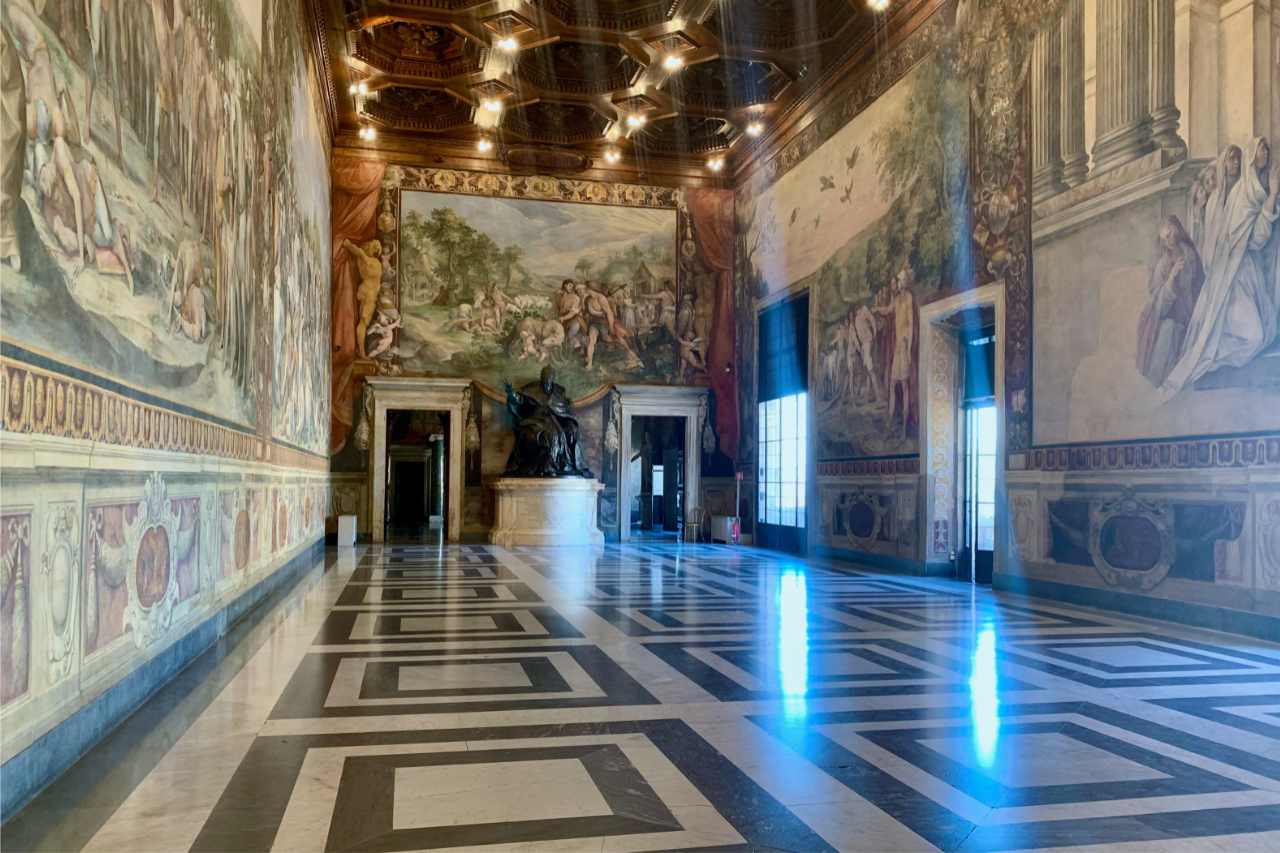 One of my favorite rooms to visit in the Musei Capitolini is this room of the Orazi e Curiazi, or the Horatii and Curiatii, who were feuding families in Ancient Rome.
One of my favorite rooms to visit in the Musei Capitolini is this room of the Orazi e Curiazi, or the Horatii and Curiatii, who were feuding families in Ancient Rome.It is one of the largest public collections on display in Rome.
You can hire an audio guide to accompany you and bring the collection to life.
Alternatively, you can join a guided tour to get a deeper understanding of Rome and the history and culture of this city.
🏛️ Rome's greatest museum is waiting for you 🏛️
Explore an unparalleled collection of ancient art at the Capitoline Museums, the world’s oldest public art collection. Guided by an expert, marvel at iconic works like the Capitoline Wolf and Dying Gaul, and enjoy stunning views over the Roman Forum. Situated on the historic Capitoline Hill, where Michelangelo’s Piazza del Campidoglio now stands, this tour offers a unique journey into the grandeur of ancient Rome’s past.
What else is there to do in the area?
Capitoline Hill is truly in the heart of the ancient city.
Just at the foot of Capitoline Hill, you can visit the Mamertine Prison, the site where Saints Peter and Paul were supposedly held before they were killed.
The giant white monument next to Capitoline Hill, the monument to Victor Emmanuel II, is worth a visit.
This is the location of the Altar of the Fatherland mentioned above.
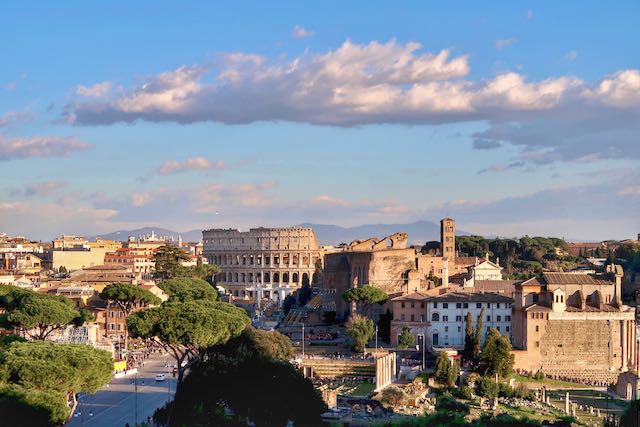 This view of the Colosseum from the roof of the Vittiriano is worth the cost of the elevator ride to the top!
This view of the Colosseum from the roof of the Vittiriano is worth the cost of the elevator ride to the top!It's free but you can also pay to take the elevator to the roof for some of the best views in Rome.
That ticket will then get you into the nearby Palazzo Venezia museum which faces Piazza Venezia, one of the most iconic squares in Rome.
And if you look for it, you can find the hidden secret garden inside (free to visit) for a lovely respite from the chaos of the city.
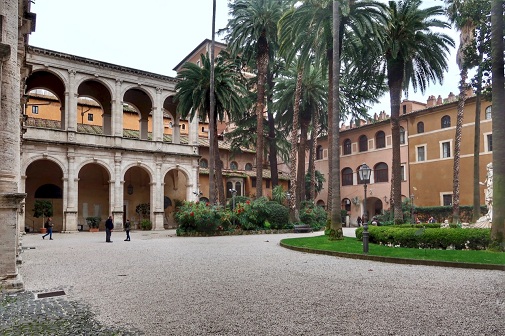 The hidden courtyard inside Palazzo Venezia is a great place to take a break from the heat and the crowds
The hidden courtyard inside Palazzo Venezia is a great place to take a break from the heat and the crowdsThe huge sites from Ancient Rome - the Colosseum, Roman Forum, and Palatine Hill - are about 15 minutes away by foot.
And about 15 minutes away in the opposite direction you can visit the Galleria Doria Pamphlij, a small but superb art museum with works by Caravaggio, Bernini, Domenichino, and more.
The Trevi Fountain is also only about 15 minutes' walk from here.
How can you get to Capitoline Hill Rome?
If you are standing in Piazza Venezia, face the big white monument (otherwise known as the Wedding Cake), and walk around it to the right-hand side.
You will come to a steep staircase next to a ramp.
This is the start of your walk up to Capitoline Hill.
You can also get to Capitoline Hill from the other four sides, but this is the easiest and most obvious way.
Many buses go to or past Piazza Venezia, so if you are not nearby and don't feel like walking, you can take a city bus and the Hop-On/Hop-Off buses also stop close by.
The nearest Metro station is the Colosseo stop, around 15-20 minutes walk away.
Where are some good places to eat and drink nearby?
If you're up on Capitoline Hill and feeling peckish, the quickest, closest place to grab a bite is in the café of the Capitoline Museums.
You don't need a ticket to eat in the cafe, as you can climb up the back stairs to the Terrazza Caffarelli to access the café (and clean public bathrooms).
The least expensive way to eat is standing at the bar or getting your food at the bar and taking it, cafeteria style, to a table in the small dining area.
However, you will miss out on the views with this option.
You can sit down in the restaurant which has lovely views, but you will pay a price for that.
If you're looking for something a bit more substantial, the area immediately near to Capitoline Hill does not offer the best food options in Rome!
I'd recommend heading to the Jewish Quarter or Campo dei Fiori, or over to Monti for lots of choices.
Romewise's Top Travel Resources
Ready to book your trip to Rome? Take a look at these helpful links to companies we use and trust:
- Keep your travel spending simple with the Wise card, which removes all the worry about exchange rates and high transaction fees all over the world
- Search for and book your perfect accommodation
- Our complete guide to what to pack for Rome
- The number one travel accessory, a multi-point travel adapter and voltage converter
- Browse a huge range of tours in Rome and beyond
- Experience unique tours and special access to Rome's most popular sights
- Protect yourself with comprehensive travel insurance
Within this post there are some affiliate links for products and services. For more details about our affiliate policy click here.
Get your 100% free Rome trip planner now!
Simply sign-up today for our free newsletter and get the Romewise Quick Start guide to Rome:
We are committed to respecting your data. Click for our Privacy Policy.
Comments? Questions? Suggestions?
Please come over to the private Romewise Facebook group and join in the conversation.
You will often find me there, happy to answer your questions / comments!
You will also meet other Rome lovers and experts, too.
What are you waiting for?
- Romewise Home Page
- What to Do in Rome
- Capitoline Hill






